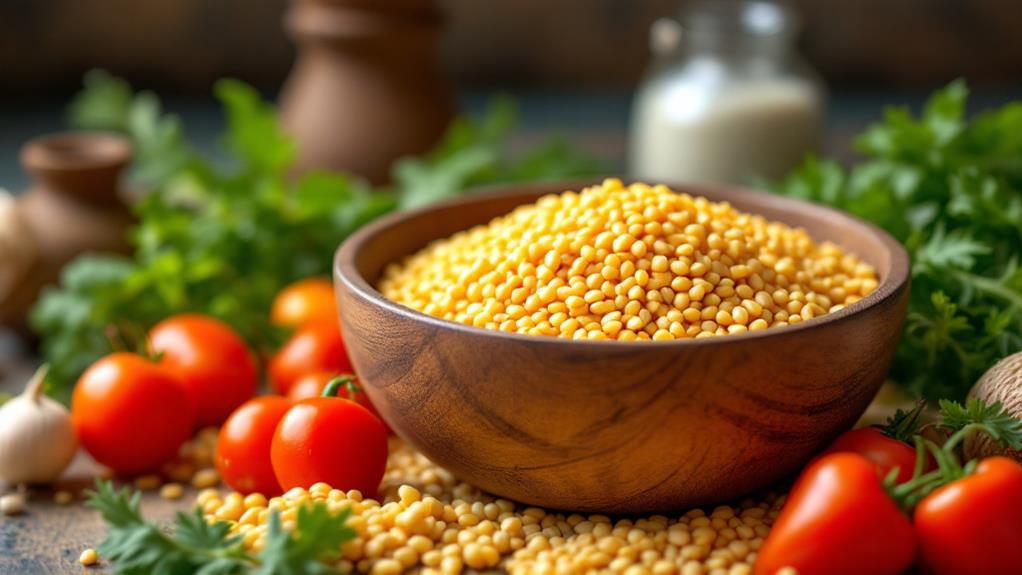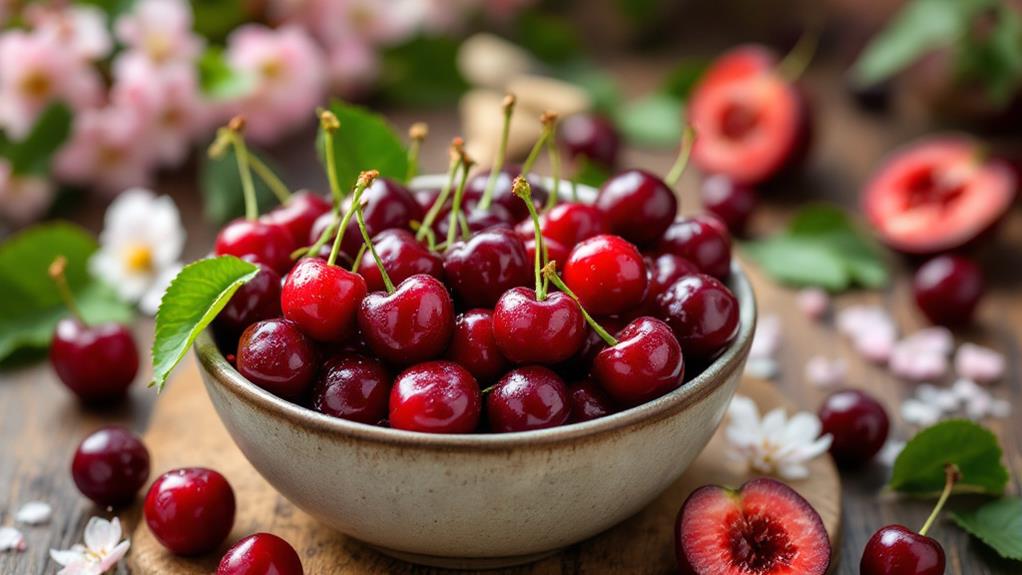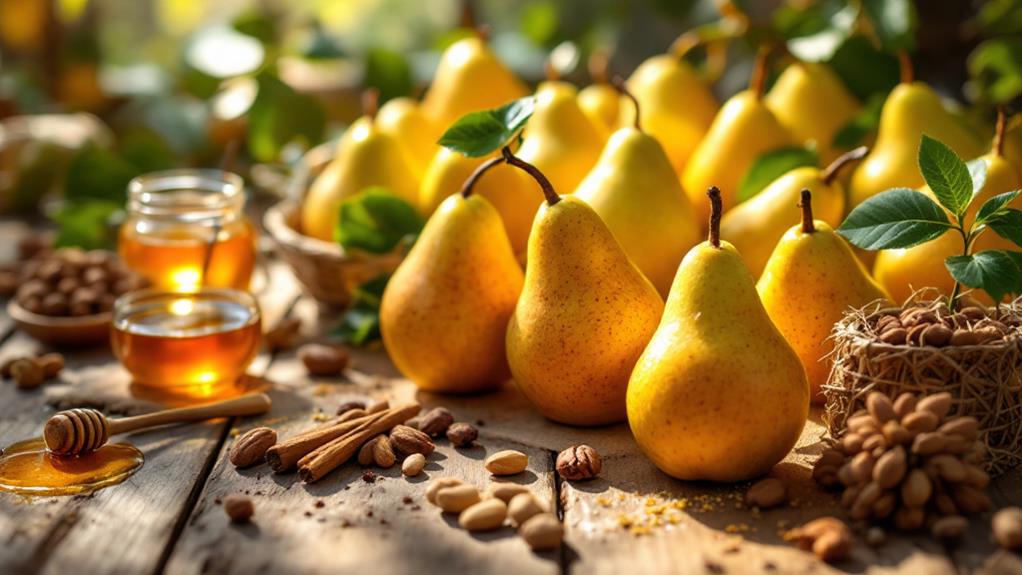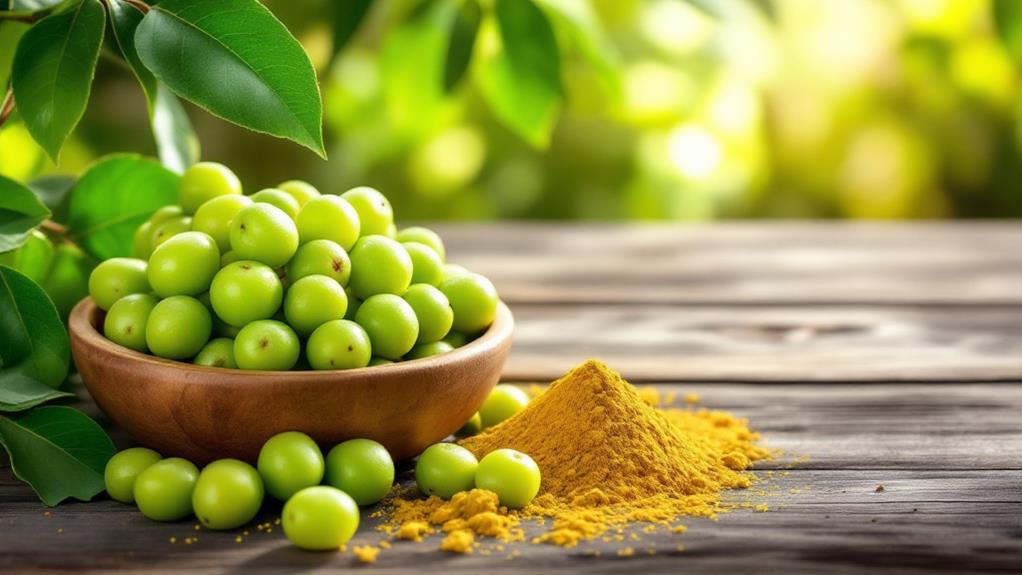A Guide to Leucaena Leucocephala: Health Benefits and Uses

Leucaena leucocephala, or the white lead tree, offers numerous health and practical benefits worth exploring. It thrives in tropical regions, enriching soils as green manure and serving as a renewable biofuel source. Rich in proteins and healthy fats, its seeds become a valuable feed for livestock, while its young pods, filled with vitamins, enhance human diets. The plant shows promising antidiabetic and anticancer activity due to its high antioxidant content. Traditionally, folks use it to alleviate colds and fevers. Exploring its role in modern sustainable agriculture and its non-toxic profile could reveal more about its incredible potential.
Overview of Leucaena Leucocephala
Leucaena leucocephala, also known as the white lead tree, is a multifaceted plant that's made its mark across tropical and subtropical regions worldwide. Originating from southern Mexico and Central America, this plant has found a place in numerous ecosystems, adapting well to human-altered environments. Its seeds are nutritionally rich, boasting over 31% crude protein, making them a high-quality fodder option for livestock. This aspect underscores its ecological importance and value in tropical regions where protein-rich feed is vital.
Beyond its role as livestock fodder, Leucaena leucocephala is celebrated for its varied uses. It serves as green manure, enhancing soil fertility, and provides timber and biofuel, reflecting its broad economic significance. The plant's medicinal properties are likewise remarkable. In traditional medicine, it's been used to treat ailments like colds, fevers, and circulatory issues, showcasing its health benefits. These traditional uses highlight the plant's role in supporting local health practices and underscore its importance in regions that rely on natural remedies.
Botanical Characteristics
While the white lead tree's diverse applications are remarkable, its botanical characteristics are equally fascinating. Leucaena leucocephala, standing tall at up to 10 meters, showcases bipinnately compound leaves with 11 to 17 oblong leaflets that bring to mind tamarind leaves. Its adaptability is notable, thriving in different soil types and climates, which makes it a resilient species. This adaptability is further emphasized by its preference for human-altered environments, such as roadsides and abandoned fields.
The plant's flowers are a sight to behold, complete and perfect, arranged in heads with 10 white stamens that extend five times longer than the corolla. Its fruit, a brown legume, matures to reveal dark brown seeds with tough seed coats, celebrated for their high nutritional value.
Consider these intriguing botanical features:
- Origin: Native to Southern Mexico and Central America, the white lead tree has spread across many regions due to its adaptability.
- Wood Density: Approximately 800 kg/m³, suitable for light construction and charcoal production.
- Leaves: Bipinnately compound, resembling tamarind, contributing to its unique appearance.
- Seed Nutritional Value: Dark brown seeds are known for their high nutritional content.
Leucaena leucocephala truly stands out in its botanical elegance and functionality.
Global Distribution

Though native to southern Mexico and Central America, Leucaena leucocephala has spread across tropical and subtropical regions worldwide. Its remarkable adaptability allows it to thrive in different environments, including human-altered landscapes like roadsides and abandoned fields. This adaptability has led to its naturalization in non-native areas such as the Lucayan Archipelago, Florida, numerous Caribbean islands, and even across Africa and Asia.
Leucaena leucocephala's ability to grow in a variety of soil types and climates has facilitated its introduction in countries throughout the Americas, the Middle East, and Australasia. This global distribution showcases its role as a crucial resource in these regions. You'll find it being utilized widely for forage and timber, in addition to in multiple agricultural applications. Its presence in these areas underscores its value and practicality, offering solutions for agricultural development and sustainability.
While its spread benefits many communities, it's essential to reflect on its impact on native ecosystems. Its rapid growth and adaptability can sometimes lead to invasive behavior, challenging local plant species. Nevertheless, its contributions to timber and forage make it an invaluable part of agricultural landscapes worldwide.
Nutritional Profile
The nutritional richness of Leucaena leucocephala seeds makes them an exceptional source of protein and significant nutrients. With a crude protein content of around 31.1%, these seeds are a powerhouse comparable to traditional animal feeds. They're not just about protein; the seeds also feature a 5.6% crude fat content, which contributes to their energy density. This makes them an ideal choice for an alternative feed. Important fatty acids, primarily palmitic, stearic, and oleic acids, make up over 5.5% of the seeds' content, offering critical components for growth and health.
You'll also find that Leucaena leucocephala seeds are packed with important amino acids, fundamental for animal development. Young pods of the plant aren't to be overlooked either. They can be consumed as vegetables, providing a bounty of vitamins and minerals. These pods improve the nutritional profile of the plant, making it not only a valuable feed but a versatile supplement to your diet. Consider these nutritional highlights:
- Crude Protein: Approximately 31.1%
- Important Fatty Acids: Over 5.5% fat content
- Crude Fat Content: 5.6% increasing energy density
- Young Pods: Rich in vitamins and minerals
This combination makes Leucaena versatile and nutritious.
Health Benefits

Leucaena leucocephala isn't just about impressive nutrition; it also offers remarkable health benefits that could improve your well-being. If you're managing diabetes, you'll find its antidiabetic properties particularly compelling. The seeds, when administered at 250 mg/kg body weight, have shown a significant reduction in fasting blood glucose levels in diabetic rats, highlighting their potential for managing blood sugar. This is a promising avenue for those seeking natural therapeutic applications.
The health benefits don't stop there. Leucaena leucocephala is packed with phytochemical compounds like flavonoids and phenolic substances, which give it robust antioxidant and antibacterial properties. With a total phenolic content of 37.38 mg GAE/g, it effectively combats oxidative stress, potentially reducing the risk of chronic diseases. Moreover, its anticancer activity, demonstrated by its ability to inhibit multiple cancer cell lines, underscores its role in health management.
You can enjoy its young, edible pods for their nutritional value or use roasted seeds as a unique coffee substitute. Plus, with no acute toxicity at doses up to 2,000 mg/kg, Leucaena leucocephala presents a safe option for integrating these health benefits into your life.
Traditional Uses
Known for its versatility, the white lead tree has a rich history of traditional uses across varied cultures. As a traditional medicine plant species, Leucaena has been utilized to address numerous ailments like colds, fevers, and circulatory issues. You might find its calming effects on nerves particularly advantageous, serving as a key component in remedies for overall wellness.
Consider these traditional uses of Leucaena:
- Edible Leaves: The cooked leaves are consumed for their nutritional value, offering a range of health benefits. They're packed with vital nutrients, making them a staple in some diets.
- Roasted Seeds: In regions such as the Philippines, roasted seeds of Leucaena are used as a coffee substitute. This alternative not only provides energy but also adds nutritional value to your diet.
- Animal Nutrition: Leucaena is heavily involved in agricultural practices due to its protein-rich fodder, improving animal nutrition and increasing livestock productivity.
- Remedies for Overall Wellness: Beyond its direct health benefits, the plant is traditionally used to elevate overall well-being, thanks to its calming effects and versatile applications in traditional medicine.
Modern Applications

From traditional uses to contemporary advancements, white lead tree's versatility continues to shine. Leucaena leucocephala is making waves in modern applications, particularly in livestock feed. It improves growth rates and feed conversion efficiency, boasting an impressive 47% increase in food conversion for pigs. For aquaculture, Leucaena leaf meal can replace 25%-75% of traditional animal protein sources in fish diets, enhancing growth metrics and cutting feed costs.
In the domain of agriculture, Leucaena leucocephala's role in phytoremediation is significant. Its nitrogen-fixing abilities help restore degraded lands and improve soil health, making it a valuable ally in sustainable farming practices.
Beyond agriculture, the seeds of Leucaena leucocephala offer a high-nutritional value alternative as a coffee substitute, especially in regions where growing traditional coffee is challenging. Health benefits extend to diabetes management, as the plant's seed extract has shown promise due to its strong antioxidant activities. Notably, its safety profile suggests no acute toxicity at high doses, paving the way for potential therapeutic applications.
Whether you're exploring its nutritional value or its role in environmental restoration, Leucaena leucocephala continues to offer creative solutions today.
Research Insights
Diving into recent research, we uncover the promising health benefits of Leucaena leucocephala seed extract (LLSE). Studies indicate that LLSE notably lowers fasting blood glucose levels in diabetic rats. At a dosage of 250 mg/kg body weight over six weeks, it shows a remarkable impact, suggesting its potential as a natural alternative for managing diabetes.
LLSE also exhibits robust antioxidant activities. The concentration needed for 50% DPPH scavenging is 839.56 ± 37.34 µg/mL, showing its capability to combat oxidative stress, albeit less potent than vitamin C.
Toxicity assessments highlight LLSE's safety. At doses of 1000, 1500, and 2000 mg/kg body weight, no acute toxicity or mortality was observed in the treated rats, making it a candidate for safe therapeutic applications.
The seed extract might benefit renal function too. Reductions in albumin, alkaline phosphatase (ALP), and total protein levels were noted, indicating possible advantages for managing diabetic nephropathy.
Here's a concise summary of LLSE research insights:
- Blood Glucose: Notable reduction in diabetic rats.
- Antioxidant Power: Strong but less than vitamin C.
- Safety: No acute toxicity at high doses.
- Renal Benefits: Potentially aids diabetic nephropathy.
Further studies are essential to fully understand LLSE's mechanisms and long-term health outcomes.
Safety and Precautions

Safety is paramount when evaluating the use of Leucaena leucocephala, especially given the trace toxins present in its seeds. These toxins can lead to adverse health impacts, particularly in animals, causing issues like hair loss if they consume too much. Safety assessments have determined that doses of up to 2,000 mg/kg of Leucaena leaf extract show no acute toxicity in rats, which is reassuring. However, you're advised to take into account mineral supplementation when incorporating Leucaena into animal diets. This is vital for preventing the negative health impacts associated with 2,3-DHP, especially in goats.
Long-term health impacts of Leucaena consumption aren't fully understood yet, emphasizing the need for further studies on chronic toxicity. When using this plant, you should carefully monitor inclusion levels in animal diets. Exceeding 50% inclusion might increase the risk of negative health impacts, so exercising caution is important. While Leucaena leucocephala has potential benefits, its trace amounts of toxins and the current gaps in understanding its chronic effects call for vigilant management. By adhering to recommended guidelines and ensuring proper safety measures, you can reduce risks and enhance the plant's benefits.




